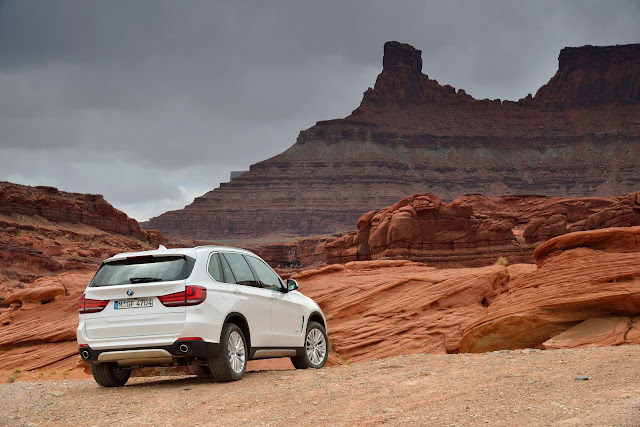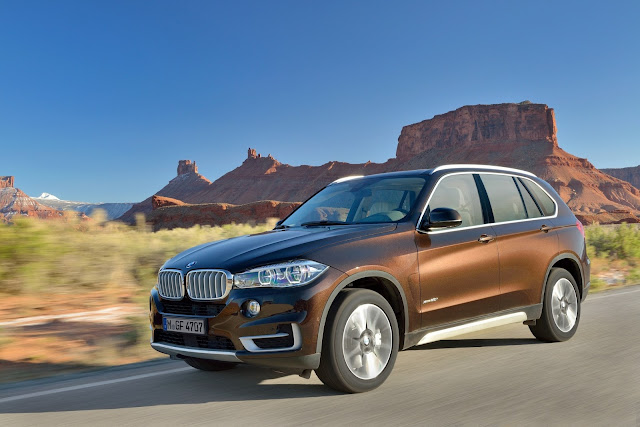 |
| Kranz stands in front of the CFRP passenger cell of an i3 used for crash testing. |
BMW i Project manager Ulrich Kranz recently spoke with Automobilwoche about how BMW i came to be. Automobilwoche's sister publication Automotive News Europe then posted the following interview on their site:
How did Project i get started? Did BMW CEO Norbert Reithofer knock on your door one day and say: The two of us need to discuss the future of the automobile?
- It wasn't entirely like that. At that point, some management board workshops were under way and dealing with the future of BMW. A number of initiatives were developed to get BMW in shape for 2020. Project i was an initiative that we carried out as part of our Number One strategy.
Was it already called that?
- Its name was already Project i, and in 2007 I got the job of turning it into a reality.
What were you asked to do?
- The job was to position BMW for the future -- and that was in all fields: from materials to production, from technologies to new vehicle architectures. The agenda included the development of sustainable mobility concepts, new sales channels and marketing concepts, along with acquiring new customers.
How great was your freedom?
- I had the freedom to assemble a team the way I wanted. The project was not tied to one of the company's brands so it could tackle any problem. We were allowed to completely break away from the existing structures.
How big was the team at the start?
- Besides myself, it was a team of seven at first: a designer; a vehicle architect; a purchaser; and three other specialists in production, marketing and finance; and then someone to keep the whole organization running. We call that individual a process steerer.
How big is your team now?
- Today several hundred people work on the development of the BMW i vehicle and the mobility services associated with it.
What criteria did you use to choose your people? Did you look for visionary types?
- I was allowed to obtain the right employees both internally and externally, and that is what I did. One issue was very important to me: I looked for people who had once been independent professionals or were operating their own businesses because they approach an issue holistically, consider the long term and think strategically. In addition, I brought a mix of young guns and veterans who had already brought a vehicle to volume production.
How did everything proceed after the team was established?
- At first, we launched an intensive research phase that dealt with mobility questions and customers' future needs. Where do we need to delve deeply into the issue of sustainability? How well will customers accept a new product and a new technology such as electric mobility? Urbanization was one of the identifiable trends. In 2007, more people already lived in cities than in the countryside. Based on forecasts, more than 60 percent of the world's population will live in an urban environment in 2030. We wanted to see what that meant concretely on site.
Where did your team travel?
- We traveled to a total of 20 mega-cities, including Los Angeles, Mexico City, London, Tokyo and Shanghai. We met people who live in metropolises and who indicated that they had a sustainable lifestyle. We lived with them, traveled with them to work and asked questions.
What did you ask them?
- We wanted to know the products that they would like from a car manufacturer, how their commute to work could be improved and how they imagined their mobility in the future. As a second step, we asked the mayors and city planners in each metropolis about their infrastructure problems, the regulations for internal combustion engines and the advantages of electric vehicles.
What findings did you reach?
- One finding was that there are great differences between the metropolises. For example, Barcelona is an old city with narrow streets that has grown over time. The demand for scooters is high there. In Mexico City, cars provide protection and a retreat to escape all the hectic activity there. In Tokyo, there is a good traffic control system; customers want to be well networked in their vehicles and get an overview of all the control systems. Some cultural circumstances surprised us as western Europeans. For example, a large portion of the Japanese living in Tokyo between the ages of 18 and 22 are not even interested in getting a driver's license.
Why has no special small car been developed for metropolises with little space for parking?
- That also occurred to us. But all our inquiries told something else: Customers do not want to do without comfort and safety. They are actually very sensitive to environmental issues, but they are not willing to put up with substantial limitations in their vehicles.
How do your respondents plan to travel in the future?
- Despite the traffic jams, many people do not want to do without a car of their own.
Parallel to your research, you promoted the pilot project for the electric Mini E. Why?
- It was clear to us relatively quickly that the first stage in development would be a car that operated as environmentally friendly as possible, meaning emission-free. The simplest, quickest way to see how an electric vehicle would go down with the public was to convert an existing car and send it into the market. A Project i team had customers test electric Minis in Europe, Asia and the U.S. The findings proved extremely valuable to us.
Where did you get the idea to construct the passenger compartment of carbon?
- We knew that we needed a lightweight vehicle and that we had years of expertise in carbon-fiber reinforced plastics and mixes of materials. We asked ourselves how we could reduce throughput times and the investment in manufacturing through the use of a new vehicle architecture.
Can you cite an example?
- One example is the paint shop: a large building involving high investment and long throughput times. If it were no longer needed, we could save a tidy sum of money. The desire for a completely corrosion-free vehicle emerged from the development department. Carbon-fiber reinforced plastic met these standards, but it had to be cost-effective -- or we had to compensate for the price somewhere else. A smaller vehicle could get by with a smaller battery, and the battery is considerably more expensive than carbon-fiber reinforced plastic. So one thing led to another.
When did it become clear that the Megacity Vehicle would be a carbon vehicle?
- We discussed the issue with the management board in 2008.
What was Project i's greatest challenge?
- This is a very comprehensive project. One is developing a technology separately within one team. Balancing out the entire Project i, considering all the aspects and keeping them all in view, that was each of the participants' true masterstroke.
Initially, did you think the job would be so wide-ranging?
- That was clear to me immediately. I saw it as a real opportunity. But you have to find good people who also see such a major undertaking as an opportunity. And we have these people.
 |
| Kranz gave Georg Kacher of Car Magazine a ride in a test i3 a few months ago. Kacher was very impressed and wrote a glowing article on his impressions. |





















































































